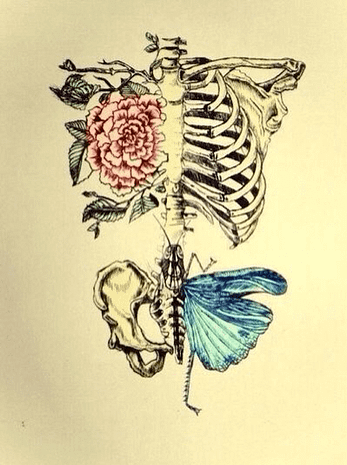From the outside we look symmetrical. Left to right, it seems that if you drew a line down our center we would get two equal parts. Most anatomical drawings present the human body in this way.
When we dig a little deeper, it turns out that right to left we are quite different, and these differences can have a profound effect on our physical functioning.
Often I have patients ask questions like, “why is it that only my right knee hurts with running?”
Good question! Some may say that this is due to handedness, with most of us being right handed. But have we ever stopped to ask why it is that most of us end up being naturally right handed? I don’t intend to get into a debate about handedness, but it certainly hints that there is something else at play, some asymmetry inherently present in all of us. These asymmetries are normal and natural. However, these asymmetries can become problematic when they become unbalanced.

This can occur due to external or internal circumstances. For example, your life requires that you do repetitive tasks to one side only, like reaching for the phone on the right, or getting in and out of the driver’s side of your car. It may also be something intrinsic to you, such as an injury. If you had an injury to your left leg, you felt more stable on your right leg as you were healing. That is helpful while you heal, but that patterning of preferring the right leg to stand on can remain long after the tissues have healed.
The Postural Restoration Institute has a deep understanding of these asymmetries and how they affect us. This institute is unique in that it addresses these complexities of being a human when creating a treatment plan, which I have not seen in literally any other course or training for physical therapists, even when I was in my doctorate program this was glossed over at best.
Let’s Talk Asymmetries.
The primary source of these asymmetries is the center of our body, the trunk. It is the generator of motion in our limbs and it is our center of stability. At the center of our trunk (the “core of the core,” if you will) lies the diaphragm, which is dramatically impacted by the asymmetries of our organ and lung placement.
The diaphragm on the right tends to be more domed due to:
- lower attachments of the diaphragm onto the right side of the spine compared to the left.
- The central tendon (which makes the dome of the diaphragm) is thicker and stronger on the right than the left.
- The right diaphragm has the support of the liver underneath.
- The presence of three lung lobes on the right and only two on the left to make space for the heart.

All these things cause the right rib cage to be in an “exhale” position with the ribs dropping down and into the body, and the ribs on the left to be in an “inhale,” an elevated and expanded position. Think of the left lung as a big balloon pushing on the smaller balloon on the right. This causes an orientation of our ribcage to the left. The attachments of the diaphragm on the spine cause the spine to turn right.
The Postural Restoration Institute has recognized this natural asymmetry and incorporates this anatomical variance into their training of physical therapists and therefore the treatment of our patients. When I first heard that everyone is biased one way, it was news to me. When I was in my doctoral physical therapy program, we learned all the asymmetries of the vital organs, however the influence of this asymmetry was not applied to physical function. Furthermore, the asymmetrical structure and pull of the diaphragm was hardly mentioned, if at all. I find this surprising now as the diaphragm is a muscle that we use all day, every day, and it has profound impacts on how we move and interact with our world.
So what’s the big deal about the diaphragm?
The diaphragm is huge! It attaches to our lower back spine and interfaces with our abdominals, low back muscles, and hip flexors. After I took my first postural restoration course, I was pleasantly surprised at the emphasis on diaphragmatic function and it’s role as a driver of human movement. I was also surprised at how “belly breathing,” which I taught and practiced myself, was actually detrimental to harnessing the power of the diaphragm. The inherent asymmetries within our diaphragm drive the initiation of human movement, specifically walking. Essentially, the stability of the right diaphragm supports right stance phase of gait (standing on your right leg and left leg swinging).

The problem occurs when we go to stand on our left leg, but we are still in right stance with our supporting muscles. The left diaphragm is not able to support our body in this position, and our right leg does not adequately recruit muscles to swing the right leg. This occurs not just in walking but also during day to day tasks. This can create all kinds of issues, knee pain on one side being just one of them. Fortunately, this asymmetry can be addressed with specific exercise that is asymmetrical, and therefore corrective. These exercises incorporate the breath to achieve diaphragm function.
Once again, I want to reiterate that this asymmetry is not a bad thing inherently. It is in fact a wonderful thing as it initiates the walking cycle and allows us to begin rotating through our trunk and pelvis. Asymmetry becomes a problem when we get stuck on one side, and are not able to get over to the other side. Relearning how to transition from right to left, and then back from left to right, is how we get balanced again.
Are you transitioning well from right to left stance?
You may have difficulty transitioning from side to side if you:
- Tend to always have tightness in one hip more than the other
- Always cross one leg over the other (usually the left one over the right)
- One leg feels longer than the other
- You notice different wear patterns on your shoes or bike saddle
Try this simple exercise to test your asymmetry:
Stand with toes pointed straight forward (feet not turned in or out). Keep this foot alignment as you transition to standing on one leg. You can touch a counter in front for support. Now, turn your pelvis so that the zipper of your pants comes over your right big toe. Try the same thing standing on the left leg, toes pointed forward, knee slightly bent. This time, try to turn the zipper over your left big toe. Notice if you can do this on one side, but not the other.
If you find one side to be challenging, but not the other, that indicates you may have trouble shifting to one side. Because of our natural human pattern, it is usually harder to do this standing on the left leg. That doesn’t mean you can’t stand on that leg at all, but it means that when you are standing you aren’t using the correct chains of muscles, which results in pain and dysfunction. To address this issue, come see me or a PRI trained therapist near you to get properly screened and the tools to find better ease and balance in your body.

